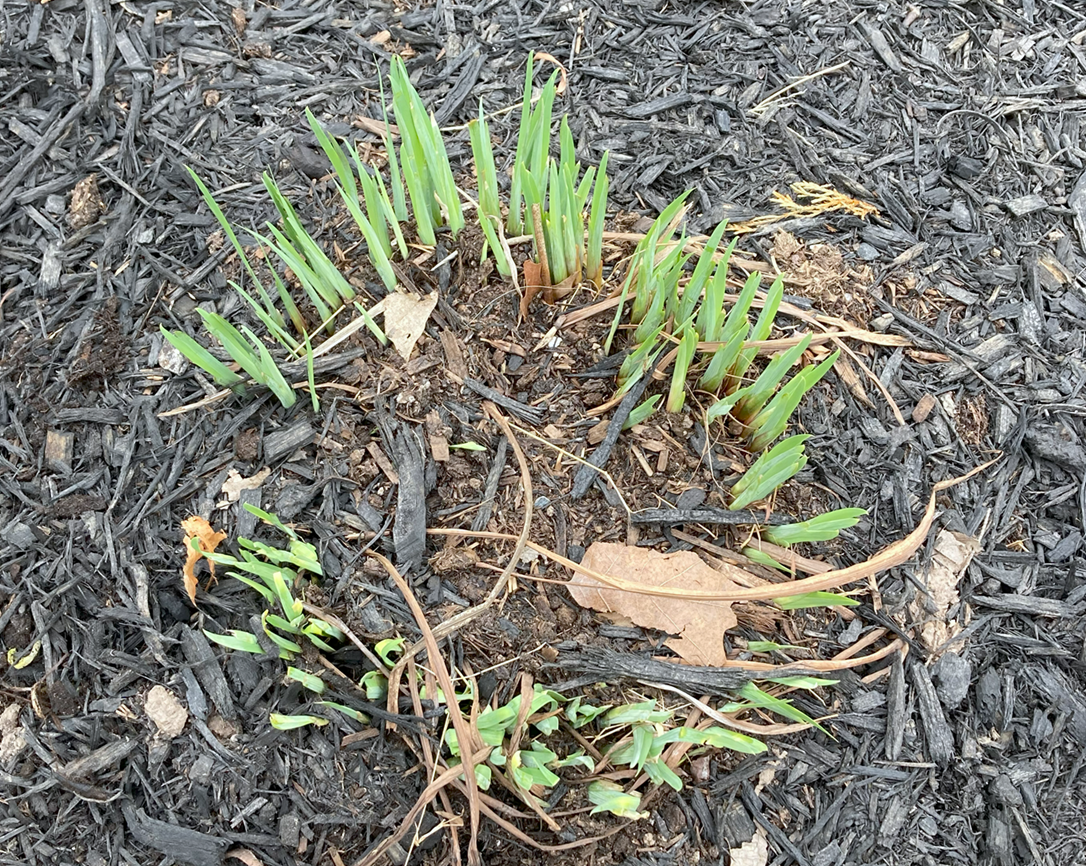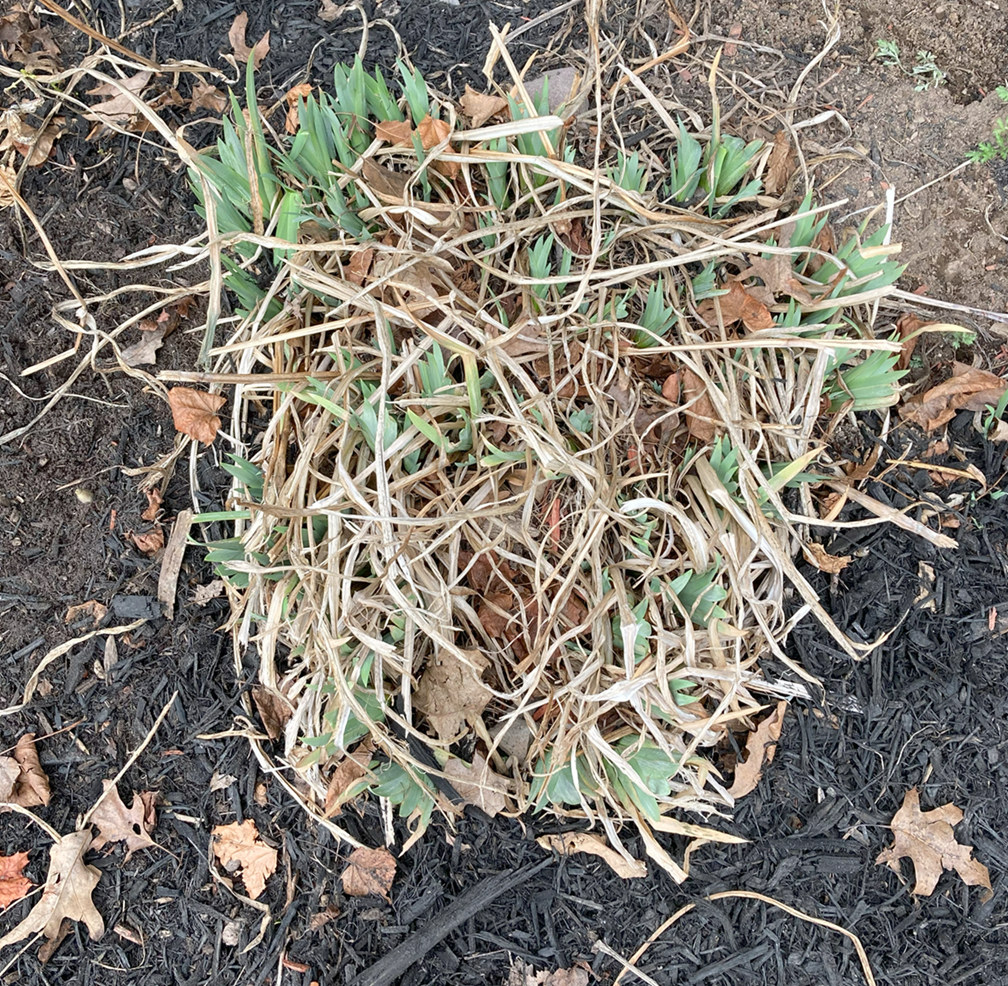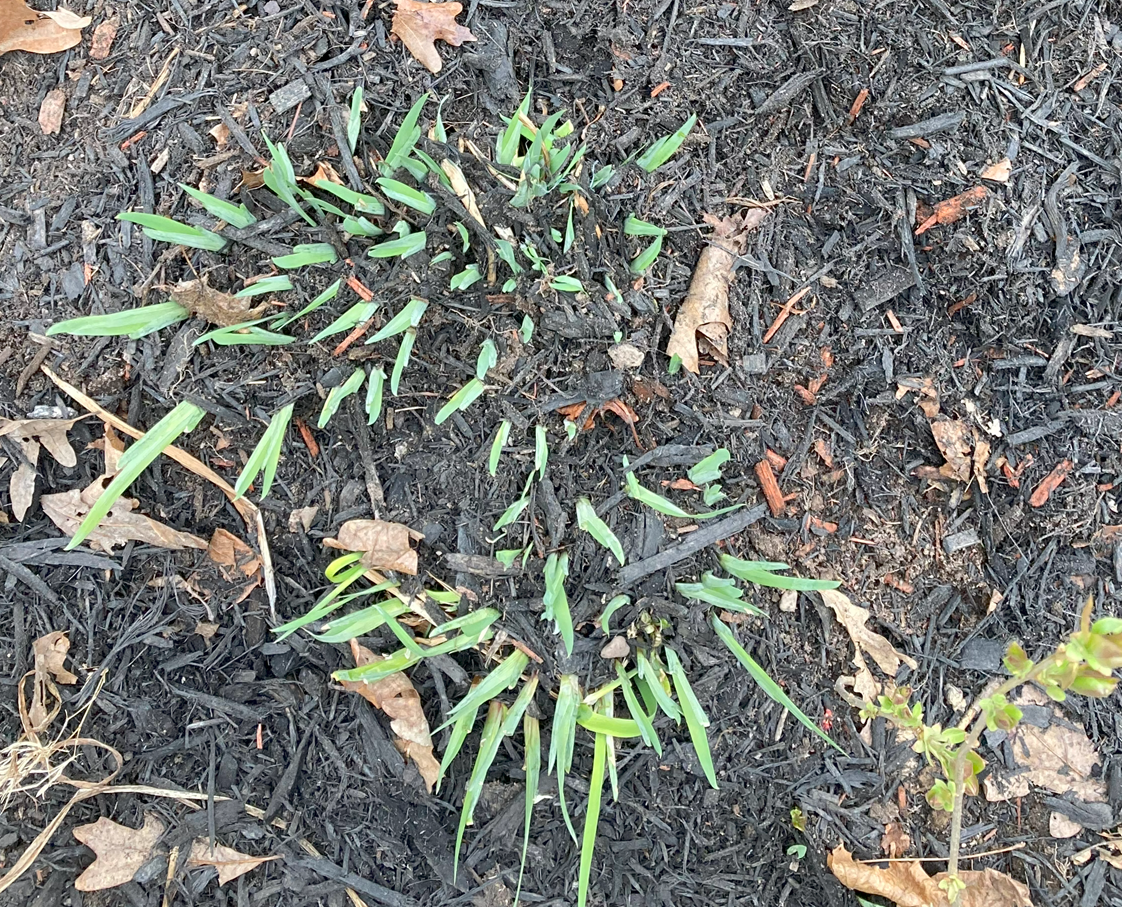Dividing Perennials
Perennials been producing less flowers in recent years? It can be very frustrating when Iris, Daffodil, Tulip and other perennials slow down on bloom production. Especially when they only flower once per year!
Dividing perennials is a normal part of landscaping maintenance and Apple Creek is available to assist.
Ready to tackle it on your own? Read on.
Some signs that it is time to start dividing perennials
- Flowers are smaller, fewer, or less prolific than in previous years.
- Growth is less vigorous or appears stunted.
- For lilies specifically, signs include spindly new growth, narrower flower buds, and shorter stems than usual.
- The center of the plant has a hole or dead space, like a halo.
- Bottom foliage is sparse or thinning.
- The plant looks crowded.
- The plant appears woody and dry.

The center of this ornamental grass has died and it is time to divide it.
We recommend cutting back ornamental grasses to between 6 and 12 inches tall during the fall. This will stop the centers from getting moldy & rotting when the tall grass falls over & center of the plant has no air circulation.
When to divide
Generally, it is best to divide perennials in the opposite season of their bloom time.
- Early-blooming plants like irises are best divided in late summer to fall, after flowering.
- Late-blooming plants like lilies are best divided in early spring or fall after foliage dies back. Make sure you get to it before frost.
- If you might forget exactly where your tulips and daffodils are, you can lift them once the foliage has dried out, but take care not to damage the bulbs. If you can wait until early fall there will be less of a chance of damaging the bulbs.
- Daylilies can be divided in very early spring or fall.
How to divide perennials?
Dig up the entire clump carefully, starting around the drip line to minimize root damage. Shake off or wash soil from the rhizomes or bulbs to clearly see them.
Separate the roots by pulling, breaking or cutting them apart with a sharp knife. Ensure that each division is healthy looking and has some foliage.
New bulbs that are ready to pull off may not yet have produced foliage. It is safe to pull them off if they are about 1/3 of the size of the original.
Discard any damaged or diseased roots or tubers. If they feel soft or squishy or seem to be dry & empty, throw them away.
Take care to put diseased plant parts in the trash. Do not add them to your compost or leaf piles. This will just spread disease.
Not sure if your plants are ready for division?
Apple Creek is always ready to offer professional advice on your landscaping if something is perplexing, just give us a call.
The image below shows a pretty healthy clump of iris. Green growth is not looking crowded or dried out & woody (like the image above).
Tips for success
- Avoid dividing plants while they are in bloom or just about to flower. Wait until flowering has finished to reduce stress on the plant.
- It is always a good practice to water the plants and surrounding soil thoroughly a day before division to reduce stress and transplant shock.
- Divide on cool, cloudy days if you can. If you can't, make sure you cover the roots with a damp cloth and keep them out of direct sun while you are working.
- Use a sharp knife or garden tool to cleanly cut roots or rhizomes.
- Bulbs like tulips, allium and narcissus can be carefully pulled apart.
- Clumping perennials like daylilies, should be cut through the crown with a sharp knife, keeping several buds per division.
- Divide plants that are healthy. Drought stressed or diseased plants probably won't handle division and transplantion well.
- Remove any dead, diseased, or damaged parts before replanting.
- Plant divisions at the same depth as the original plant.
- Give them some space to mature.
- Water divisions well after planting to help them get established.








